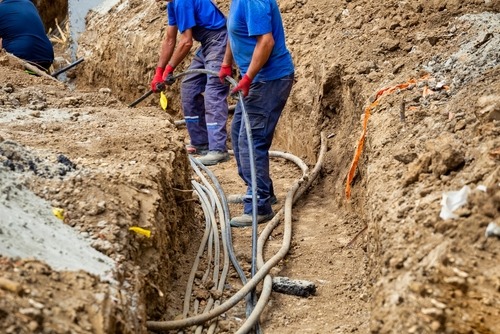Virginia Tech professors earn $2.5M DOE grant to study efficient methods burying power lines

Backed by a $2.5 million grant from the U.S. Department of Energy (DOE), professors at Virginia Tech’s College of Engineering and the Virginia Tech Electric Service are collaborating on more efficient ways to underground power lines safely and cheaply.
According to Joe Vantassel, an assistant professor at Virginia Tech’s Department of Civil and Environmental Engineering, these efforts could help maintain reliable power supplies and reduce the risk of damage from violent storms. While that in and of itself is not groundbreaking, boring has always presented its own form of challenges, as workers churn through soil more than 3 feet deep, where other power, water and sewer lines may lurk. Records are not always up to date, nor is every dig properly checked – and that can cause major problems.
For starters, it puts the crew at risk. Second, if an existing line is hit, undergrounding has to stop while repairs are made. That adds project costs, on top of possible disruptions to other utility services. Investigations follow to determine if other lines are hidden nearby, further delaying projects. As time goes on, this is only getting more problematic, as more utilities and higher demand spread the network of underground items.
Enter Vantassel and his crew, who have proposed putting sensors on the drill head of underground directional boring machines and at ground surface level. Vantassel compared the idea to that of x-rays or MRIs.
“You get an X-ray or you get an MRI if you’re not feeling well because doctors need more information to decide what to do,” Vantassel said. “So how do they figure this out? Well, they take an image. In geotechnical engineering, where we’re dealing below the ground surface, we have similar needs.
The sensors would work with artificial intelligence prediction to capture data and then render 3D images of the terrain for operators to see and evaluate. AI predictive modeling combines information from three modes of sensing to provide the clearest picture.
Virginia Tech Electric Service showed Vantassel and team how its own boring machine works, including an alarm that goes off when an object is in the area and promptly shuts down the machine.
“With their technology, they were talking about having a virtual view of the area to let the operator see ahead of time and quickly manipulate around obstacles and objects versus having to have two-way communication with someone else or another instrument,” Matt Salmon, engineering manager for Virginia Tech Electric Service, said. “It’ll make things more efficient for us to operate the machine.”
The project is scheduled to begin this August. In the meantime, Vantassel and team are actively recruiting graduate students to help with related tasks. Once underway, it’s expected to last three years, and at the end, Vantassel expressed hope the project could lead to reduced costs for undergrounding, allowing more competitive ground with overhead lines.
